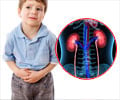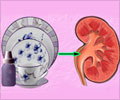A new study from St. Michael's Hospital says that patients who sustain injury to their kidneys and require in-hospital dialysis are three times more likely to need long-term dialysis
A new study from St. Michael's Hospital says that patients who sustain injury to their kidneys and require in-hospital dialysis are three times more likely to need long-term dialysis later in life compared to those without a history of this condition.
Patients with acute kidney disease are a high-risk group for whom early medical surveillance and intervention may prevent progression to irreversible end-stage kidney disease.Approximately two million Canadians have kidney disease and more than 20,000 of these individuals receive ongoing chronic dialysis, according to the Kidney Foundation of Canada.
The study, published in the September 16 issue of the Journal of the American Medical Association (JAMA), is the largest study to date to look at the long-term health implications for patients who have experienced acute kidney injury.
"Now that we understand that having acute kidney injury multiplies the risk of future kidney complications, we as physicians can increase the monitoring of these patients and address complications as they occur. If we do this, we may be able to prevent these patients from needing chronic dialysis," said Dr. Ron Wald, the study's lead investigator.
Dr. Wald and his colleagues, including St. Michael's Hospital researchers Drs. Joel Ray and Muhammad Mamdani, studied provincial health records from adult patients across Ontario, using healthcare databases at the Institute for Clinical Evaluative Services (ICES).
The research team identified hospitalized patients in Ontario with an episode of acute kidney injury requiring dialysis between 1996 and 2006 and evaluated their long-term risk of both chronic dialysis and death. These 3,769 individuals survived free of dialysis for at least 30 days after discharge and were matched with 13,598 patients who were equally as ill but without acute kidney injury or dialysis during their hospitalization. The patients were followed for a maximum of 10 years through March 2007.
Advertisement
Advertisement
RAS















